
It’s Always You
Bing Crosby sang it to Dorothy Lamour, in Zanzibar of course . . .
Christmas Day 1964 – we arrived off Mombasa and berthed alongside the Chakla, another Company ship. Also, in port was a BI passenger ship named ‘Karanja’ and this name had a family link for me. My father was on the first ‘Karanja’, when she was discharging troops in Operation Torch off North Africa during WW2.
She was bombed and sunk. Fortunately, Dad survived, but I wanted to see the replacement so as to tell Dad.

Karanja that Dad sailed in during the war.
During peace time she operated on the India – East Africa Service.
 HMS Karanja in 1942 – after she’d been bombed, and is now on fire, and I can only assume that Dad was helping to fight the fires – she sank later.
HMS Karanja in 1942 – after she’d been bombed, and is now on fire, and I can only assume that Dad was helping to fight the fires – she sank later.

Karanja, that I saw in Mombasa.
The evenings over Christmas were spent along Kilindini Road, mainly at the Casablanca Bar and The Nelson Bar, very popular places that Christmas.
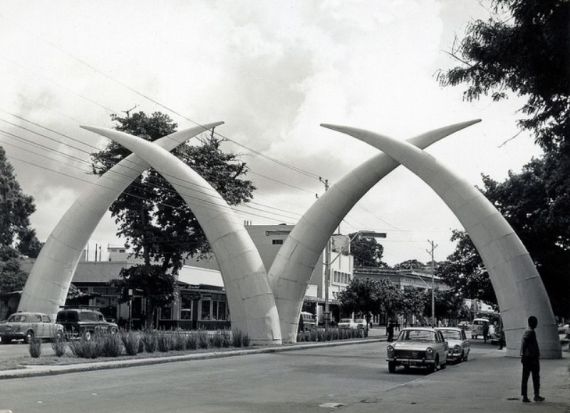 At the top of Kilindini Road were the famous ‘tusks’.
At the top of Kilindini Road were the famous ‘tusks’.
During the Christmas period HMS Eagle and her support ships arrived in port. She was a Royal Navy aircraft carrier with a compliment of over 2500.

The above shows HMS Eagle leaving Mombasa harbour.
Among the various Royal Navy crews were several bands, and these bands obtained permission to play in the nightclubs and bars of Mombasa.
To say that Mombasa, during the Christmas period of 1964, was a ‘jumping’ town is an understatement.
1965 – New Years Day and onward
I met a young lady who had a car – very unusual at that time, and she asked me to join her at a beach outside Mombasa called Nyali Beach, and she arranged to pick me up from the ship.
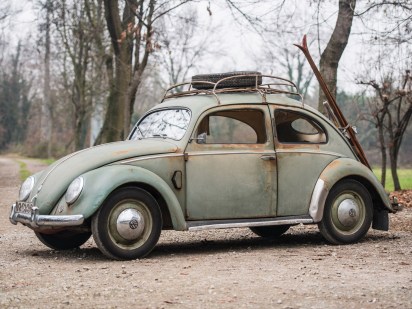
Of course this sounded a great idea, so I agreed, and she did pick me up in a small VW car, known as a Beetle. It was battered and dented, but it moved. The picture is the closest I could find to illustrate the car (I think the young lady had a blue car).

A girl , a car & a beach . . . what more could a twenty year old want?
Little did I know that it wasn’t for my charming self that I was invited, but my ability to pick the car up a little by rocking it or to push it – a lot! The car did not have a reverse (it was broken, and she couldn’t afford to have it fixed), so every time we had to reverse I had to get out and push it backwards. I have been very wary of invitations to go for a drive with a female ever since. The beach was nice, and the sun helped me recuperate after all the exercise of pushing a VW part of the way to Nyali beach.
Mombasa is an island, so we had to cross to the mainland to visit the beech. Fortunately the car didn’t breakdown on the bridge.

We were in Mombasa for a fortnight during which time we change our Indian crew to a full African crew. We now had to learn Swahili instead of Hindi.
The Chilka was the first British ship to carry a full compliment of African crew. We managed to make the newspapers and the Mombasa Times ran a major story with photographs, unfortunately I can not find any pictures.
The one problem with the African crew was that most of them did not have any concept of a European winter. They had sailed ‘deep sea’ from Mombasa, but mainly to neighbouring countries or to India or the Persian Gulf. So, when we mentioned to some of them that they should consider something better than open toed sandals for a UK winter, they grinned with their large sparkling white teeth, as if they knew best.
Our new African steward was aware of the winter cold, and he had planned for such, but he told us that the deck crew would have to find out for themselves, because they will not listen to either him or us.
When they did arrive in London the deck crew had a grey pallor due to the cold, and they had so many layers of clothing on that they could hardly move. During their free time they spent most of it in the cinema, because it was cheap, and they could at least keep warm.
After leaving Mombasa our next stop was Dar es Salaam in Tanganyika, which had become independent in 1961. It was a very short trip, a matter of hours.
Tanganyika Territory or German East Africa before WW1, was transferred to Britain under a League of Nations mandate in 1922, later confirmed by the UN, which changed it to a Trust territory after WW2.
In 1961 the trust territory was transformed in to a sovereign state, and eventually became a republic within the Commonwealth.
In April 1964 Tanganyika joined with the Peoples Republic of Zanzibar and Pemba, to create the United Peoples Republic of Tanganyika and Zanzibar, which became the United Peoples Republic of Tanzania a few months later.
The city of Dar es Salaam still had that British feel, but I never felt as comfortable as I did in Mombasa.
Tanganyika might have changed its name to Tanzania, but at that time people still referred to it as Tanganyika. The economy of the place was not as strong as Kenya, and it showed.
Our time in Dar es Salaam was about three days. Not long enough to see much, because we had to work each day, but the town was a lot quieter than Mombasa.

From Dar es Salaam we sailed for Tanga, which is a seaport on the northern tip of Tanzania, very close to the border with Kenya. Tanga, famous for its sisal, means ‘farm or cultivated land’ and gave its name to Tanganyika, which means ‘Sisal farm’.

Sisal plant – the leaves are removed and dried to make the sisal that we know at home.
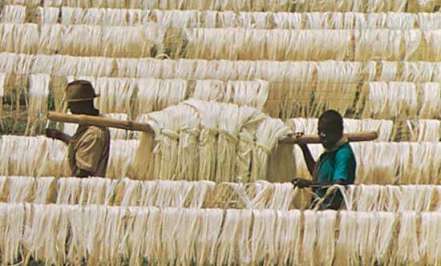
Sisal leaves drying in the sun.
Tanga was the first German East African establishment, having been bought from the Sultan of Zanzibar in 1891.
Of course, we loaded sisal, after discharging, stone, heavy machinery and frozen food, including more ice cream. Two days was enough for Tanga, after which we sailed for Zanzibar, a favourite place for the slavers of old, and of course Bob Hope, Bing Crosby and Dorothy Lamour.

Picture from the internet – it was taken in 1964
The Anglican Christ Church cathedral in Stone Town, Zanzibar stands on the old slave-trading market site.
In 1822 the British signed a treaty with the Sultan of Zanzibar to end slavery, but it took until 1876 before this trade came to and end. Of course, the trade carried on to a lessor degree by kidnapping children and selling them to ‘customers’ in the Persian Gulf. Slaves escaped to freedom as late as 1931.
David Livingstone (pictured below) estimated in 1857, that 80,000 thousand slaves died on the way to the Zanzibar slave market, and of those that lived 50,000 were sold to Sheikhs and rich traders in the Persian Gulf.
This slave market had nothing to do with the West African slave trade to America, which was outlawed by the UK in 1807.

David Livingston
The altar, in the cathedral is supposed to be at the exact spot of the whipping post.
We loaded bag of cloves from dhows and barges using our own gear and the local labour for stowing the bags.

Mtwara, in Tanzania was our next port of call. The town was a created town in the 1940’s for the export of groundnuts (peanuts), but the enterprise failed, and it was abandoned in 1951.
The town had been created to house 200,000 people, but when I visited Mtwara it had a feeling of being abandoned, with few people walking the dark sandy streets.
On leaving Mtwara it was back to Dar es Salaam, followed by Tanga, where I had an inoculation top up for cholera (another blunt needle). Not sure if it was the injection or the local beers, but I was not a happy chappy for a few days.
Our final East African visit was back to Mombasa where we anchored in the Mombasa Creek. The constant sound of insects and birds as we lay at anchored reminded me of the Edgar Wallace books and films that I’d seen and read.

The Canoe song.
If you like Paul Robeson, click on the above link to hear him sing from the film.
After a day and a half at anchor we moved alongside at the main port area, to load tea and coffee for the Sudan, and a present of flour from America for Aden.
Two days later our East African adventure was over, and we sailed for Europe via the Red Sea.
We arrived at Aden five days later around mid-night; anchored, and immediately gangs of labour came aboard to unload the Aden cargo. They worked through the night and we sailed at lunchtime.
It was two days to Port Sudan to discharge the Mombasa tea and coffee along with empty soft drink crates – no idea why they wanted empty crates. Strange how odd things like empty drink crates, stick in one’s mind from so long ago.
The export cargo from Sudan was Arabic gum (in bags, with plenty of tiny insects), ivory (it wasn’t illegal at that time), and groundnuts.
It was February, and as we got closer and closer to the Suez Canal the temperature became noticeably cooler. A very pleasant temperature for the Europeans, who were still in tropical whites, but for our African crew they began to complain of being cold. The Company had arranged for a supply of warm weather clothing for the crew and this was handed out.
The problem was that the clothing was of mixed sizes so some of the crew complained that they couldn’t move because their shirt was too tight, and others complained that their legs were cold because their trouser were too short. It became the cadets’ job to reclaim all the clothing and to make sure each crew member was kitted out with clothes that fitted, as best we could. This put a stop to a break out of fights over pieces of clothing.
Once in the Mediterranean all the crew appeared to put on weight – in fact they refused to take off any of their clothing because they were so cold, and they began to look like a gang of Michelin men.

It took us a week from Port Sudan to Gibraltar, during which time the temperature had dropped from around 27 c (80F) to a cool 12 c (53F) and the crew were suffering.
Our next port was Hull in the UK, and we had to transit the Bay of Biscay in winter – not a pleasant experience with heavy Atlantic swell causing us to pitch, roll and corkscrewing in a force eight.
The temperature kept dropping and by the time we reached the English Channel it was down to 6 c (42 F), the officers were now in ‘blues’ far too cold for shorts.
I paid off Chilka on a Sunday, while still at sea, with the grand sum of £20 in my pocket. I’d been away for about four months, so I didn’t expect a long leave. We docked in Hull on Monday morning, and by the afternoon I was back home in Birkenhead, which is across the river from Liverpool.
Yesterday and today –

Chilka at 7,132 gt, a happy ship to see the world and experience different cultures.
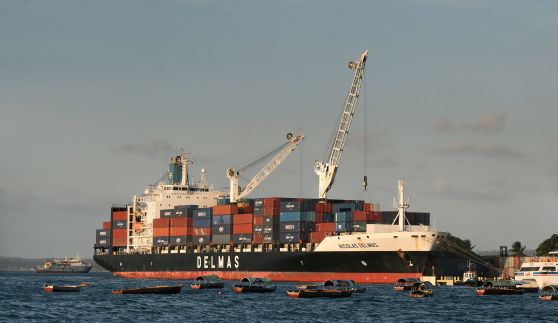
Credit for the photograph by Muhammad Mahdi Karim
A container ship alongside in Zanzibar in 2011, where is the ‘romance’ of going to sea if you are only in port for a few hours.

 M/V Chilka
M/V Chilka




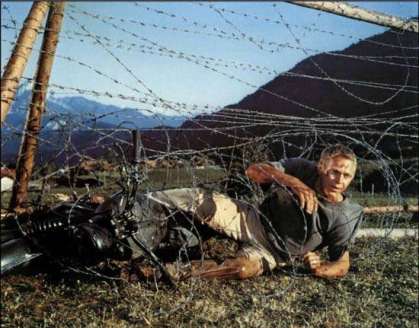




![Chilka-07[1]](https://silverfox175.files.wordpress.com/2018/10/chilka-071.jpg?w=637&h=342)

 Loading cargo in the 1960’s was very labour intensive, and the introduction of containerisation put a lot of stevedores out of work.
Loading cargo in the 1960’s was very labour intensive, and the introduction of containerisation put a lot of stevedores out of work.
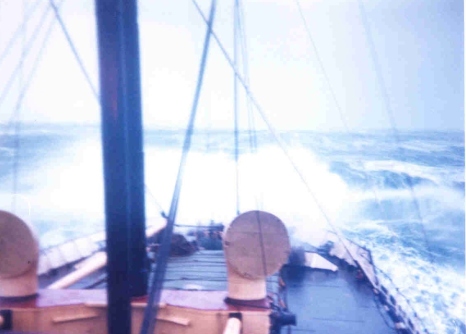 I took this photograph when I was 3rd Mate on another BI ship a couple of years later, I’ve included it in this blog as an illustration of butting down the Channel.
I took this photograph when I was 3rd Mate on another BI ship a couple of years later, I’ve included it in this blog as an illustration of butting down the Channel.


 The passenger doesn’t help himself, all food is covered and a crew member serves you so there is tight control for health reasons, not portion control – you can have as much as you require.
The passenger doesn’t help himself, all food is covered and a crew member serves you so there is tight control for health reasons, not portion control – you can have as much as you require.








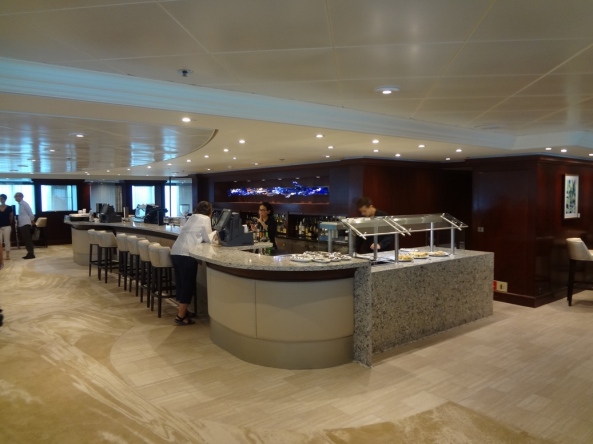
















 Azamara Pursuit
Azamara Pursuit I was 3rd Mate in the Pundua in 1966.
I was 3rd Mate in the Pundua in 1966.